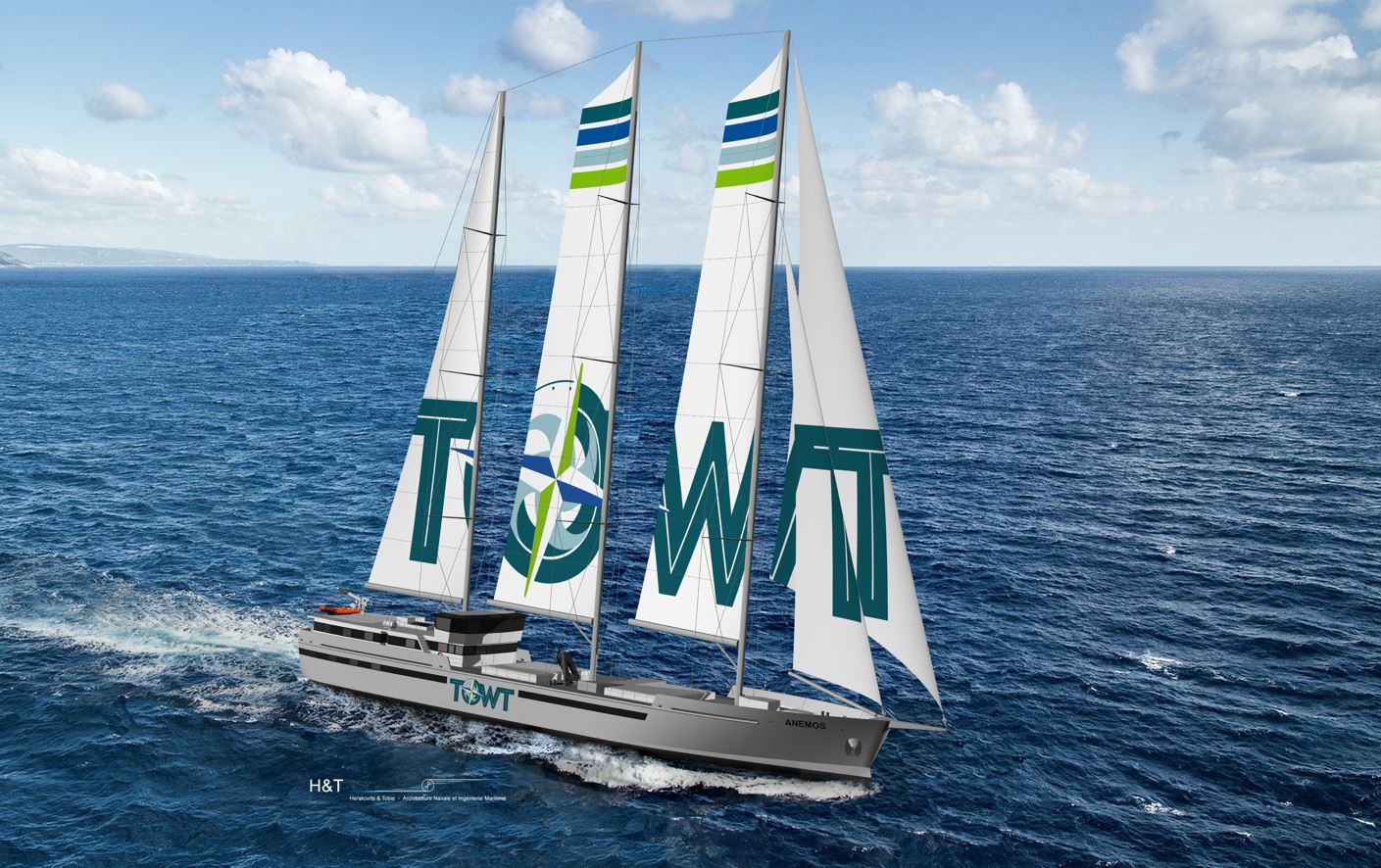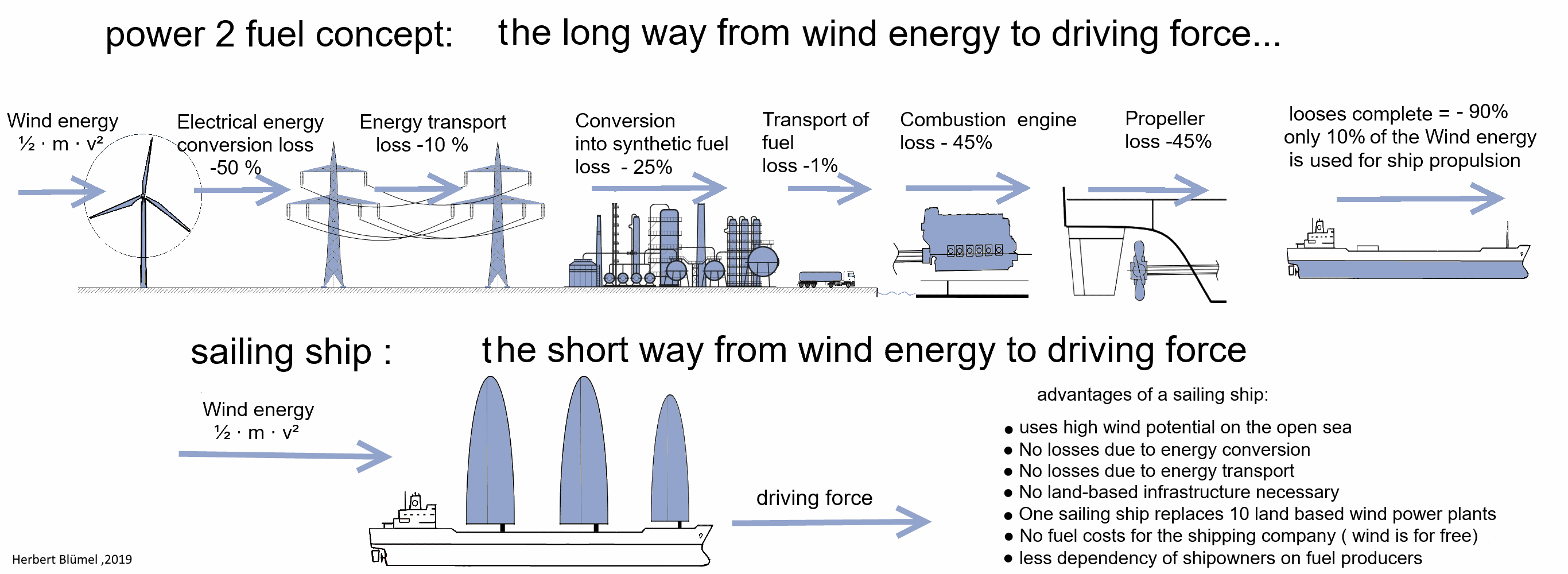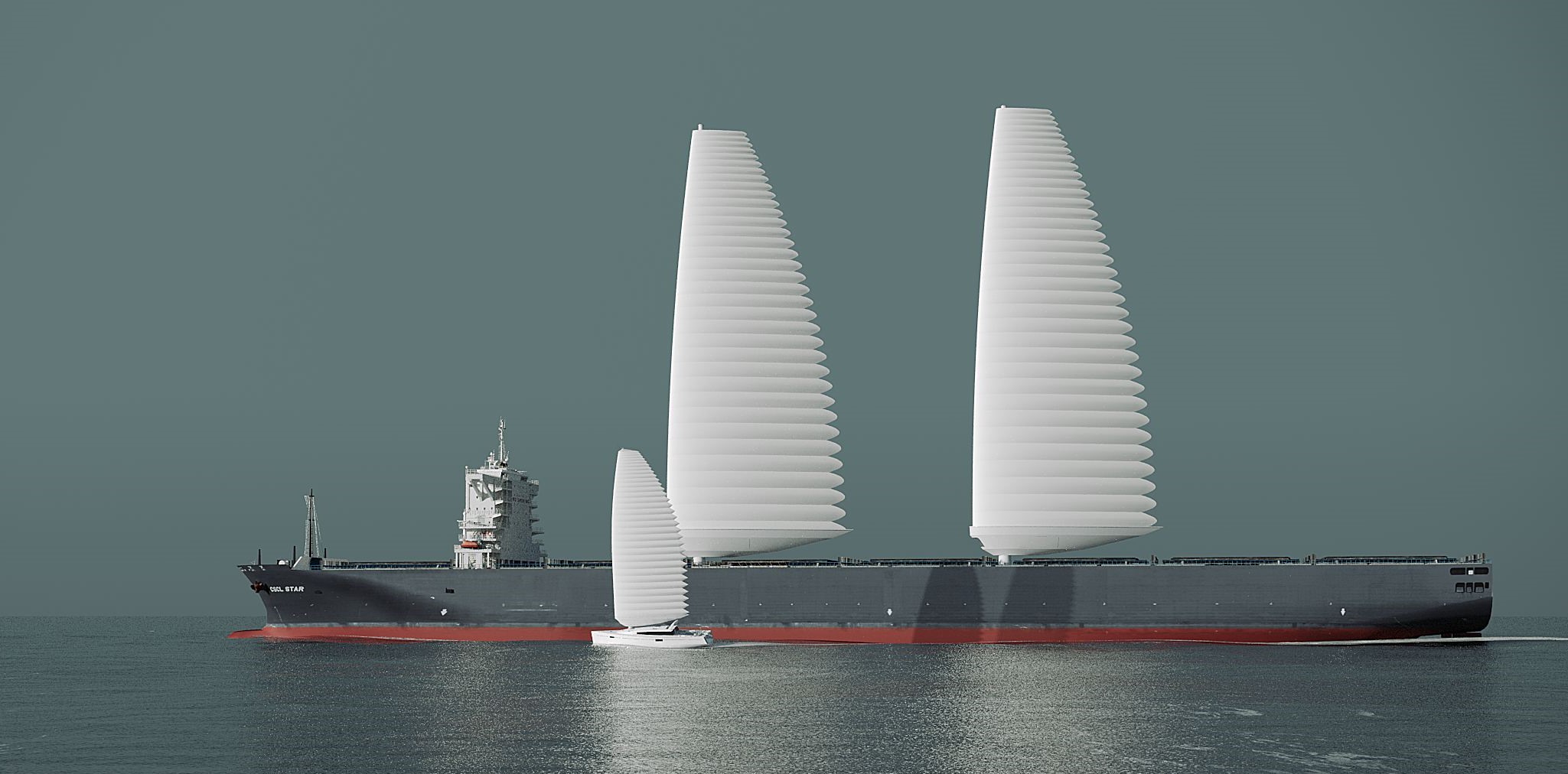Sailing, a technology that is over 5,000 years old, is now making its return. By 2050, it is estimated that some 40,000 ships will be equipped with wind propulsion systems, representing 40 to 45% of the world fleet. After decades of heavy fuel oil or diesel-fuelled shipping, the sails are once again being hoisted to open up new, low-carbon routes on the seas. A renaissance made possible by advanced technologies. Discover a booming sail industry.
Maritime transport in the spotlight
It is time to act. According to the latest report from the European Maritime Safety Agency, trade on the seas is responsible for major negative impacts.
Oil pollution is a major cause for concern and a major factor in the degradation of marine biotopes. Oil spills at sea are still all too common. Although ecological disasters caused by oil spills are fortunately constantly decreasing, recent history has shown us that they cannot be ruled out. The oil spill from a supertanker off the Israeli shores in February 2021 is a recent reminder of this. Turtles, fish and whales were stranded on kilometres of damaged coastline, coral reefs are now covered in tar and the endangered sea snail is deplored. These disasters are massive: fauna and flora die from environmental asphyxiation, the seabed is destroyed for decades, and coastal areas are also contaminated by these highly toxic materials. The magnitude of these impacts remains associated in our collective memory with the oil era.
Another problem impacting biodiversity, the extent of which is often ignored, is that motorboats are the source of major noise disturbance caused by their propellers and cause hearing problems in certain species such as cetaceans. This makes it difficult for these animals to communicate and locate themselves at sea.
A particular focus is on the significant air pollution generated by maritime trade, which has given rise to new regulatory requirements. This is an important issue when you consider that 40% of the European population lives less than 50 kilometres from the coast.
At the heart of the debate is the use of heavy fuel oil. This residual product of oil refining contains many impurities, particularly sulphur. When it is burned, sulphur dioxide (SOx), an extremely harmful pollutant for health and the environment, is released into the atmosphere. The shipping industry alone accounts for 24% of global sulphur dioxide emissions and is therefore logically very closely monitored in this respect.
In 2005, standards to reduce these emissions came into force under Annex VI of the International Convention for the Prevention of Pollution from Ships, better known as the MARPOL Convention. But since January 2020, the regulatory pressure is intensifying with the introduction of a rule that further limits the sulphur content in marine fuel from 3.5% to 0.5%. According to the International Maritime Organisation, this reduction would make it possible to cut SOx emissions by 77%, i.e. 8.5 million metric tonnes.
The sea shipping industry accounts for 940 million tonnes of CO2 per year.
Another pollutant is particularly denounced. This is what is known as black carbon. This dark soot results from the combustion of heavy fuel oil. It absorbs sunlight and is identified as a major factor in global warming. When they land on ice, the black particles accelerate its melting. Since 2011, the use of heavy fuel oil has been banned in Antarctica and a proposed ban in the Arctic by 2024 is under consideration.
Unsurprisingly, the shipping industry has also been singled out for its carbon emissions. It accounts for 940 million tonnes of CO² per year and is responsible for 2.5% of global greenhouse gases (GHG).
At the European level, shipping emissions in 2018 represent more than 138 million tonnes of CO², or more than 3.7% of total EU emissions, and 15% of total global shipping emissions. This represents 44 million tonnes of fuel (70% of which is heavy fuel oil) or almost 7% of the EU's total oil demand. Following the Paris Agreement in 2015, the IMO adopted in April 2018 a strategy to reduce greenhouse gas emissions by 50% by 2050 compared to 2008. Different indicators such as the Energy Efficiency Index for Ships (EEXI), the Energy Efficiency Design Index (EEDI) or the Carbon Intensity Indicator (CII) have been developed in order to allow all ships, old and new, to target this reduction.
As awareness of the multiple impacts of conventional shipping grows, the sector is under increased regulatory constraints. The need for reform is conducive to the development of the vessel industry.
Moving away from the "fuel-centric" vision
Sailing propulsion and biofuels (liquefied natural gas, BioGNL, E-GNL or E-methanol) are the two alternatives currently being put forward to avoid the use of heavy fuel oil or to limit the use of diesel. However, comparative analyses clearly show that sailing is the most relevant model from an ecological and economic point of view.
In the diagram below, the first scenario corresponds to the production of biofuels, which requires a large number of stages: capturing wind thanks to wind turbines, generating electricity, running electrolysers to produce hydrogen, compressing it, cooling it and synthesising it with vegetable oils or CO² captured at the end of a factory, synthesising a fuel, burning it in an engine and finally supplying energy to a propeller. The ecological relevance of this system is certainly better, compared to conventional fossil fuels, but the energy losses are significant. The use of sail, represented in the second scenario, is much more optimal in terms of energy efficiency since the energy is captured and produced directly at the source.
The multiple steps required by these alternative fuels also have a strong economic disadvantage, both in terms of investment amounts and variable costs. Production, storage and the type of engines required are much more expensive. Green carburettor-centered solutions are definitely not a miracle solution.
Sailing therefore has many advantages. The energy savings are massive: in the order of 80 to 90% for a ship like the upcoming Neoliner. The French electricity supplier EDF has put a figure of 600,000 MWh over 15 years, equivalent to the production of three 6 MW wind turbines or the energy consumption of a town of 9,000 inhabitants for ten years.
That said, it is still early days for the velic sector, and hybrid solutions are often needed to ensure the transition of this sector. For example, biofuels can be used as a back-up to primary wind power when there is a lack of wind or a need for port manoeuvring, thus contributing to the transition to wind power.
Credit: Herbert Blümel, 2019
Comparative analysis of energy delivery between biofuel and vessel systems.
The sails of today and tomorrow
Rotors, kites, inflatable wings, rigid composite panels... innovation is constant and the range of solutions offered today is very wide. This great technological variety allows us to adapt to the vast typology of vessels and needs, and for the moment there is no single solution.
But what are the most promising innovations? Which are the most likely to stand out tomorrow?
If some solutions, such as rotors or suction profiles, seem in principle to be less environmentally relevant because of their need for external energy to operate, they adapt to different conditions than other systems and should not be dismissed so quickly. For the rest, it remains very difficult to compare other so-called "passive" systems with each other. In addition to ecological performance, there are various criteria for assessing the future of a technology: robustness, agility, profitability, etc. According to the experts, it will only be possible to compare solutions with each other after five years of navigation. It is indeed during the first technical stop in dry dock that the real performance of a ship can be evaluated. Data will be analysed in detail: navigation in port or at sea, resistance to weather conditions, etc. Patience is therefore required
The company TOWT (Transoceanic Wind Transport) is reviving the taste for old ships to transport sustainable goods: the coffees, chocolates, wines and beers in the hold are all organic, natural or fair trade. In seven years, five maritime routes have been opened with 19 chartered sailing ships.
The company TOWT (Transoceanic Wind Transport) is reviving the taste for old ships to transport sustainable goods: the coffees, chocolates, wines and beers in the hold are all organic, natural or fair trade. In seven years, five maritime routes have been opened with 19 chartered sailing ships.
The velic industry, a concentrate of innovation
Behind the sails, a whole ecosystem of innovation exists. The sector calls on the combined skills of shipbuilding, aeronautics, ocean racing and data analysis. One of the keys to the sailing revolution is actually modern meteorology and new routing systems that analyse the wind in order to optimise and anticipate the sea’s hazards. Also, beyond the ship, innovation is focused on pre- and post-transport logistics.
The sector can rely on research centres such as the Jules Verne Institute of Technological Research in France which, with its 90 researchers, promotes collaborative R&D to bring these technologies to industrial maturity.
The sector also needs to plan for the training of new talent to manage these new kinds of ships. According to navigator Michel Desjoyaux, in order to understand these systems, future marine officers must be trained in sailing. More specifically, they need to be trained in the optimised and reliable steering of wind-powered boats via ship behaviour simulators.
Inflatable thick profiles, Michelin Wasamo
How can the transition be accelerated?
Structuring is the velic alternative’s main challenge. While the technological alternatives already seem to be well in place, the sector is facing questions of industrialisation, commercial and logistical development.
Initiatives are emerging to pool energies. In France, Néopolia, with its 240 members, aims to create a shared construction site to develop and industrialise technologies that will enable them to become competitive.
The idea is to speak with one voice in order to seize the current momentum favourable to the development of the velic industry. This is precisely the mission of the International Windship Association (IWSA), a network of 130 members (shipowners, technology providers, engineering offices, naval architects, shippers etc.) created in 2014. The IWSA has also drafted a letter calling for support from all members of the maritime community (policy makers, engineers, shipowners etc.) so that they can take part in the energy transition. It calls for more favourable public policies and more incentives for financing. It has also set up the "Decade of Wind Propulsion" from 2021 to 2030, a programme aimed at accelerating wind propulsion. EU studies show that up to 10,700 wind power plants could be developed by 2030. This would include 50% of the market for bulk carriers and 65% for oil tankers. The industry is on a roll. This was confirmed by the first "Winds for Goods" conference on the various wind-powered techniques organised last September in Saint-Nazaire, an event organised by the French Wind Ship Association, which is part of the IWSA network and brings together all the players in the sector.
There is a real need and the demand is gradually being felt. Shippers such as Renault, Jas Hennessy & Co, Michelin and Clarins have understood the need to green their logistics and switch to sailing, but there is still some way to go to achieve a real transition of the entire maritime trade.
Certain obstacles must be removed on the customer side. Part of the answer undoubtedly lies in the appreciation of certain requirements, notably that of transit time. Non-hybrid shipping has an average speed of 11 knots, whereas conventional ships sail at 15-16 knots. Each knot of speed reduction corresponds to a 10 to 15% reduction in CO², which, combined with the sailing solution, results in a 90% saving at 11 knots.
Another obstacle to be removed in the absence of financial taxes on emissions and atmospheric pollutants is that the rates advertised for transport by sail are significantly higher for certain types of cargo, particularly containerised cargo. However, it should be anticipated that the new maritime routes that have been opened up will eventually allow ports to be served as close as possible to their needs, which will reduce pre- and post-carriage costs. It is also interesting to note that the rates advertised by sailing vessels are not sensitive to oil price fluctuations, thus avoiding the Bunker Adjustment Factor that conventional freighters must apply to their prices.
To achieve this energy transition of the sector, it is also necessary to get the end consumer on board. In order to raise awareness and show the benefits of cycling, labels must be made visible. For example, TOWT has developed "ANEMOS", a collective certification label. If consumers become more vigilant about the negative environmental impacts of their purchases, brands will more quickly adopt decarbonised and transparent shipping. The world's merchant fleet carries 90% of the world's goods, so the stakes are high.
FACTS & FIGURES
90%
of goods are transported by international maritime transport
10.700
wind power installations could be developed by 2030 and between 37,000 and 40,000 by 2050
X2
Underwater noise from motor ships is estimated to have doubled between 2014 and 2019
24%
Almost a quarter of total NOx and Sox emissions are attributable to maritime transport in Europe.
13.5%
of GHGs come from maritime transport produced in the EU, slightly behind air transport (14.4%) and far behind road transport (71%).
90% to 130%
This is the increase in GHGs that can be expected by 2050 for the sector in the absence of major reforms (base:2008)
To be read also in the dossier " Decarbonised revolution on the seas"






